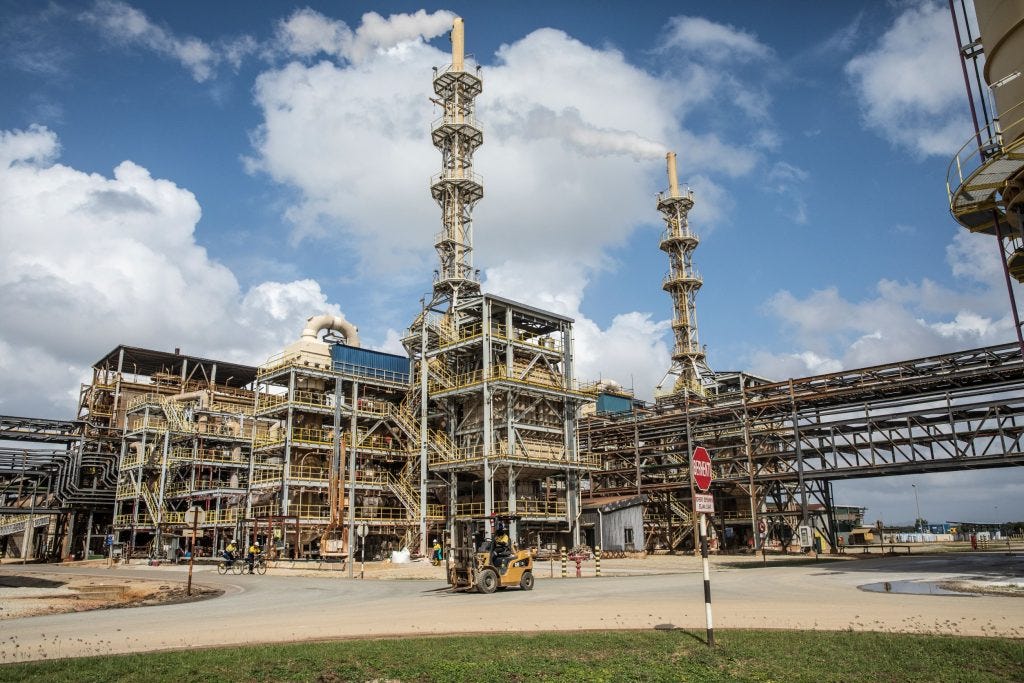Lynas Rare Earths:
At first glance, Lynas Rare Earths doesn’t look that impressive. Like most mining companies, it operates with thin margins, has limited revenue growth, and is highly exposed to cyclical market forces.
A majority of Lynas’s revenue—about 56%—comes from a single product: NdPr. This light rare earth element is critical in making permanent magnets used in electric vehicles (EVs) and wind turbines. Its counterpart, Dysprosium (Dy), is another key rare earth element. While NdPr forms the base of NdFeB magnets, Dy is added to improve heat resistance and stability, enabling broader use in high-temperature industrial environments—making it even more critical in certain applications.
Global production of NdPr sits around 65,000 tons annually, with China dominating about 62% of that. Lynas contributes roughly 5%, giving it some strategic relevance, though it still has a relatively small footprint compared to China’s control.
That said, Lynas made headlines in May 2025 by announcing it had produced the first commercial batch of Dysprosium Oxide outside of China—a huge milestone. Until now, China had a virtual monopoly (99.9%) on heavy rare earth element (HREE) production.
There are currently only three known paths to producing usable heavy rare earths (HREEs)
Harvesting from the Moon – NASA and China are exploring this, but technological and financial hurdles make it a long-term, uncertain bet.
Seabed Mining – Companies like The Metals Company (TMC) are testing extraction of polymetallic nodules from the Clarion-Clipperton Zone in the Pacific Ocean. TMC has completed field tests and is seeking U.S. approval for commercial operations—potentially bypassing the International Seabed Authority (ISA). However, environmental concerns and the fact that 80% of the ocean remains unexplored make this path risky and controversial.
Refining – This is where Lynas stands out. Although its ores contain relatively low concentrations of heavy rare earths 400ppm for Dy and 100ppm for Ty, Lynas is heavily investing in processing infrastructure in Malaysia and the U.S. With strong backing from the U.S. Department of Defense, it’s building a key facility in Texas to refine heavy rare earth elements outside of China.
Here’s how Lynas operates: It extracts mixed rare earth concentrates, including SEGH (Samarium, Europium, Gadolinium, Holmium, Dysprosium, Terbium), and ships them to Kuantan, Malaysia. There, the company performs chemical treatment—cracking, leaching, solvent extraction, precipitation, and calcination—to separate and refine rare earth oxides. This environmentally destructive process is the only reason why China dominates the market—and possibly why Lynas chose to operate the post processing facility in Malaysia.
Now, Lynas is developing a fourth facility in Texas, backed by the U.S. government. This plant will process pre-treated mixed rare earth feedstock shipped from Lynas, and importantly, it will be non-radioactive. It will also accept third-party feedstock, showing Lynas’s ambition to build a broader rare earth supply chain ecosystem in the U.S. The plant will be capable of processing 2,500–3,000 tons of heavy rare earth products annually, including Dysprosium and Terbium.
The Department of Defense estimates that by 2030, the U.S. military alone will require 1,200 tons of rare earth magnets annually—yet current domestic production is effectively zero. Lynas’s Texas facility could meet 35% of that projected defense demand, while producing enough materials to support about 500,000 EV motors per year.
So while Lynas may not seem like an attractive investment at first glance, the deeper you look, the clearer it becomes: Lynas is the only viable HREE player outside of China. MP Materials is still limited to NdPr production. TMC has a long road ahead. Lunar mining is decades away at best. In contrast, Lynas is the only one doing the dirty, necessary work—right now—for the global HREE supply chain.
Disclaimer: I am NOT a financial advisor. The content provided should not be interpreted as investment advisory or management services, nor as an offer to sell or a solicitation to buy any securities or related financial instruments. All information is for educational and informational purposes only and should not be considered financial advice.
Muad’Dib may, at times, hold positions in the securities discussed in the articles on this website. Any financial decisions you make are your sole responsibility, and Muad’Dib is not liable for any outcomes or consequences arising from those decisions







